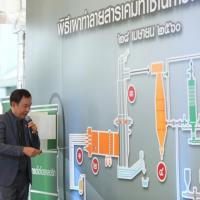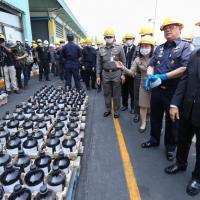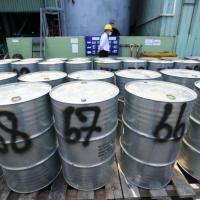ONCB destroyed over 21 tons of controlled chemicals If in the wrong hands able to produce more than 250 million meth tablets, 5,000 kilograms of ICE and 2,500 kilograms of heroin
News / View / ASEAN Information
Friday 28th of April 2017
ONCB destroyed over 21 tons of controlled chemicals If in the wrong hands able to produce more than 250 million meth tablets, 5,000 kilograms of ICE and 2,500 kilograms of heroin

Today (28 April 2017) at 10.00 hrs, Mr. Sirinya Sitdhichai, Secretary-General, Narcotics Control Board presided over the Controlled Chemical Destruction Ceremony. Office of the Narcotics Control Board in collaboration with concerned agencies, namely, Pha Muang Force, Provincial Police Region 5, Department of Industrial Works, Samut Prakarn Provincial and Akkhie Prakarn Public Company Limited organized the event. A number of foreign anti-drugs liaisons and law enforcement officers from the Safe Mekong Coordination Centre witnessed the incineration of the total amount of 20 tons of Methylene Chloride, 500 kilograms of Hydrochloric Acid and 800 kilograms of Sodium Carbonate at the Akkhie Prakarn Public Company Limited, Samut Prakarn Province.
Mr. Suwaphan Tanyuvardhana, Minister of Justice gives priority to the drug problem and view that its sustainable solution needs to terminate the illicit production. A large number of arrests suggested that Thailand has been used as a transit country for drug trafficking. As a consequence, one significant supply reduction strategy is a serious control of precursors and chemicals not to enter production sites. Today destruction ceremony resulted from a successful cooperation among six member countries of the Safe Mekong Operation Plan, namely, China, Laos, Myanmar, Thailand, Cambodia and Viet Nam that had united efforts to intercept the chemicals essential for illicit drug production not to reach production sites and the smuggling of drugs from the Golden Triangle to outside. If these chemicals could have been smuggled to the production sites, they can be used to produce a large amount of illicit drugs as follows:
• 20 tons of Methylene Chloride for 200 million tablets of Methamphetamine (Ya-ba) or 4,000 kilograms of ICE or 800 kilograms of heroin
• 500 kilograms of Hydrochloric Acid for 50 million tablets of Methamphetamine (Ya-ba) or 1,000 kilograms of ICE or 1,500 kilograms of heroin
• 800 kilograms of Sodium Carbonate for 200 kilograms of heroin
Totally, 21,300 kilograms of controlled chemicals were destroyed today, reducing the potential production of more than 250 million of meth tablets, 5,000 kilograms of ICE and 2,500 kilograms of heroin. This directly interrupted the vicious cycle of illicit drug production in the Golden Triangle and benefits the drug situation of Thailand and this region as a whole.
Mr. Sirinya Sitdhichai, Secretary-General, NCB, noted that “The destruction of Methylene Chloride, Hydrochloric Acid and Sodium Carbonate today was subject to the Order of National Council for Peace and Order no. 32/2559 dated 21 June 2016 that has authorized Secretary-General, NCB with power to make an order to destroy the chemicals that have been seized by authorities and unclaimed of ownership or proved in good faith.
This is the third destruction that has been made by the ONCB. The previous destructions twice were of Safrole, commonly used for illicit production of Ecstasy. The first destruction on 10 September 2010 was 50.4 tons of Safrole that could have been used to produce 63 million tablets of Ecstasy. The second destruction on 11 June 2015 was over 16 tons of Safrole that could have been used to make 20 million tablets of Ecstasy.
Mr. Secretary-General reiterated that the destruction of controlled chemicals today was from the domestic seizures only. In 2016, the cooperation under the Six-Country-Safe Mekong Operation Plan resulted in the seizure of 78,000 kilograms of controlled chemicals. The cooperation is one of key measures to stop the production, the trafficking and the spread of illicit drugs. This helps to cut the supplies for illicit drug production considerably, reducing negative impacts of drug epidemic in our communities in concrete terms.











